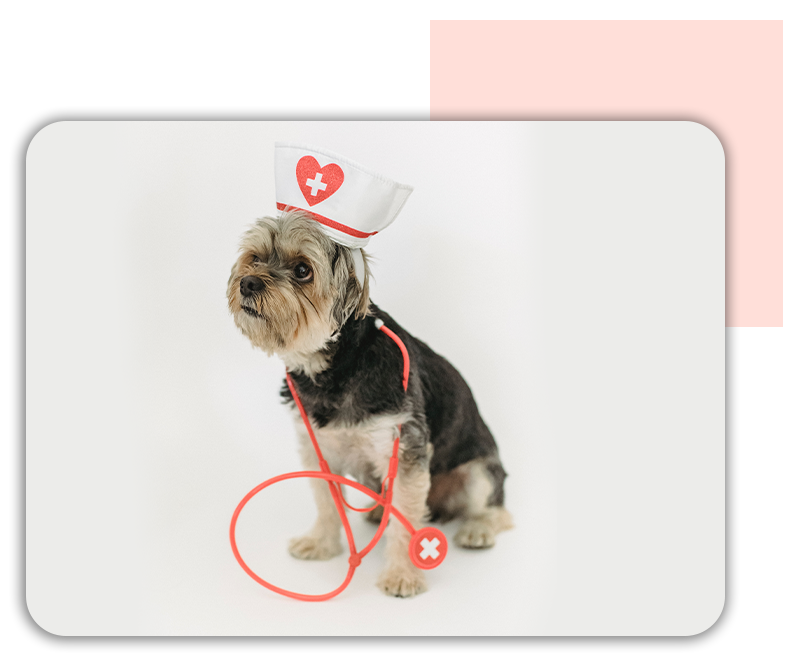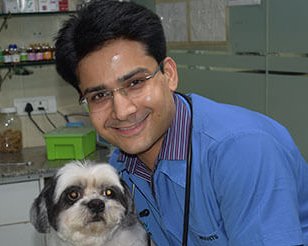Endoscopy is the use of specialized video cameras to evaluate areas within the body in a minimally invasive manner. In most instances, endoscopy is performed for diagnostic purposes allowing visualization and sampling of abnormalities. However, it can also be used for therapeutic uses as well, termed as interventional endoscopy (balloon dilation of strictures, foreign body removal, bladder polyp removal, feeding tube replacement, etc.).
At MaxVets, we most often use endoscopy for foreign body removal from the upper GI tract, for laparoscopic surgical procedures and for examination of the nasal passages.
For An Endoscopic Exam
- Candidates for endoscopy include those with a stricture (abnormal narrowing) or foreign body in the Oesophagus.
- Symptoms such as vomiting with or without blood and/or melena (blood in the stool) may indicate a stomach ulcer or cancer.
- If a duodenal aspirate (sample of fluid in the intestine) for culture or biopsies are necessary, then endoscopy is surely required as well

Continued unexplained epistaxis (bleeding from the nose) may warrant an endoscopy of the nasal passage
According to their location:
- Respiratory tract endoscopy: Rhinoscopy, Tracheoscopy, Bronchoscopy
- Upper GI tract endoscopy: Esophagoscopy, Gastroscopy, Duodenoscopy
- Lower GI tract endoscopy: Colonoscopy, Ileoscopy
- Urinary and genital tract endoscopy: Cystoscopy, Urethroscopy, Vaginoscopy
- Abdominal endoscopy: laparoscopy
Endoscopy is performed with either a rigid or flexible endoscopes. At MaxVets, we routinely use both types of endoscopy for a variety of situations:
Flexible endoscopes consist of long and flexible insertion tune with a bending tip at the end that enters the body, an eyepiece and a control section.
- Bronchoscopy: an exam of the lower airways.
- Colonoscopy: an exam of the transverse colon, ascending colon, caecum, large bowel, and rectum.
- Endoscopy: an exam of the Oesophagus, stomach, and upper intestines.
The rigid endoscope cannot be used in some areas, such as the stomach because it does not have the bending tip, so it cannot be flexed to allow examination.
- Arthroscopy: an exam of soft tissue structures and joint cartilage which is not visible on radiographs. Decreased damage to the joint and shortened recovery times are two advantages of arthroscopy while its limitation is during diagnostic and corrective surgical procedures in small patients.
- Cystoscopy: an examination of the vagina, urethral opening, urethra, bladder and ureteral openings.
- Laparoscopy: an exam of the abdominal cavity performed through a small incision in the wall of the abdomen or through the navel. It is done in veterinary medicine to obtain hepatic and renal biopsy samples.
- Proctoscopy: an exam of the large bowel and rectum.
- Rhinoscopy: an exam of the nasal cavity and nasopharynx
- Thoracoscopy: an exam of the chest cavity. It is done only sparingly in veterinary medicine.
- An endoscope is a flexible tube with a viewing port and/or a video camera attachment that is inserted either into the stomach through the mouth or the colon via the rectum.
- It is performed with either rigid or flexible fiberoptic instrument.
- The tip of the endoscope is manipulated using a control knob in the hand piece.
- In addition to the fiber bundles which provide the light source, two channels are present within the endoscope.
- One channel allows various endoscopic tools to be passed and fluids to be suctioned or samples to be taken.
The other channel allows air or water to be passed into the stomach/intestine to inject air into the area or wash away mucus from the viewing port.
The examiner can identify abnormalities such as inflammation, abnormal swelling or areas of scarring or stricture (abnormal narrowing).
If a foreign body like bone, stick, toy, rock, coin or hairball is seen, it can usually be seen and retrieved.
- It helps to avoid invasive exploratory surgeries.
- For evaluating the digestive system, it is non-surgical (no cuts, no stitches, no pain).
- It allows direct visualization of the problematic area.
- It allows multiple repeated examinations.
- Colonoscopy is useful to diagnose many large bowel diseases or generalized intestinal diseases such as inflammatory bowel disease or diffuse intestinal lymphosarcoma.
- Sometimes, tissue appears grossly normal but shows pathology when examined histologically via biopsies. Endoscopy allows multiple biopsies at a time.
- Complications due to the actual endoscopic exam are rare.
- Anesthesia is a necessity for endoscopy.
- Endoscopy needs to be preceded by adequate laboratory testing and radiology. Especially the blood work is necessary to indicate the patient is healthy enough to withstand anesthesia.
- For endoscopy of the gastrointestinal tract, the animal must be fasted for 24 to 48 hours before the procedure.
- Care needs to be taken to prevent tearing of the stomach or intestines during the exam. If tearing does occur, surgical repair must be done immediately.
- Gastrointestinal endoscopy cannot be used to examine the entire length of the intestine, especially the jejunum and ileum.
Meet our team members











